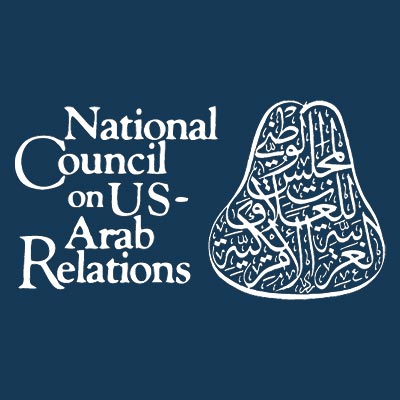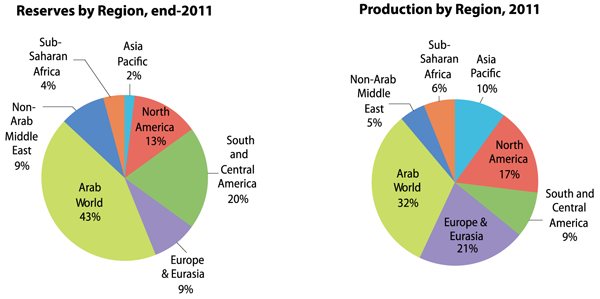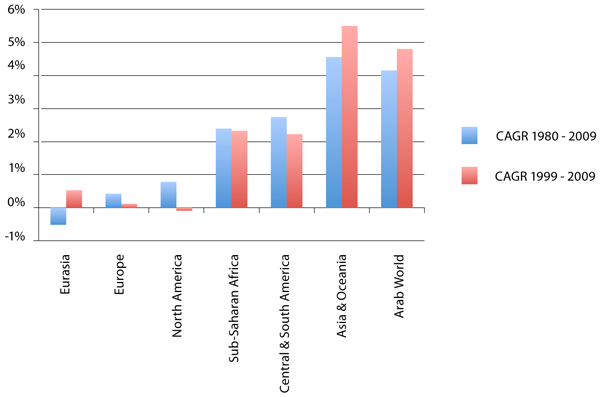Source: Bassam Fattouh and Laura El-Katiri, “Energy and Arab Economic Development,” Arab Human Development Report Paper Series, 2012, http://www.arab-hdr.org/publications/other/ahdrps/ENGFattouhKatiriV2.pdf.
- Arab countries hold more proven oil reserves than any other region (713.6 billion barrels), comprising more than 43 percent of the world’s total proven reserves.
- With an average output of 26.3 million barrels per day in 2011, the Arab world produces nearly a third of world oil supply.
- Oil reserves in the GCC countries (Bahrain, Kuwait, Oman, Qatar, Saudi Arabia, UAE) are among the cheapest in the world to find, develop, and produce (with the exception of those in Oman). The IEA estimates total production costs in Saudi Arabia, Kuwait, and the UAE to vary between $3 and $5 per barrel of oil produced.
- Saudi Arabia holds more than 265 billion barrels of proven oil reserves, 16 percent of global total reserves. Four of the world’s ten largest producers of oil are Arab oil producers, including Saudi Arabia, the UAE, Kuwait and Iraq.
World Oil Reserves and Production by Region |
- The Arab world also holds considerable reserves of natural gas, 55 trillion cubic metres (Tcm) at the end of 2011, more than a quarter of the world’s total proven gas reserves.
- The hydrocarbon sector’s contribution to Arab countries’ government revenues is high in most cases: around 66 percent in Algeria, 62 percent in Yemen, and between 80–90 percent in most of the Gulf States and Libya.
- The GCC economies’ energy demand rates since 1980 have risen quickly: more than 6 percent annually, which made the sub-region’s energy consumption between 1980 and 2009 grow more than five-fold.
Primary Energy Consumption Growth by Region Since 1980
|
- Aggregate Arab oil consumption amounted to 6.98 million b/d in 2010, about 8 percent of world demand for oil, but with the world’s fastest regional average annual growth rate of 3.9 percent over the past decade.
- Oil covers 52.9 percent of the Arab world’s energy needs, natural gas 45.4 percent, with the remainder provided by alternative energy sources.



